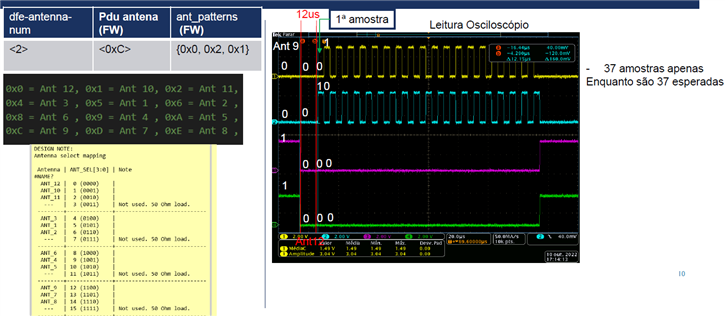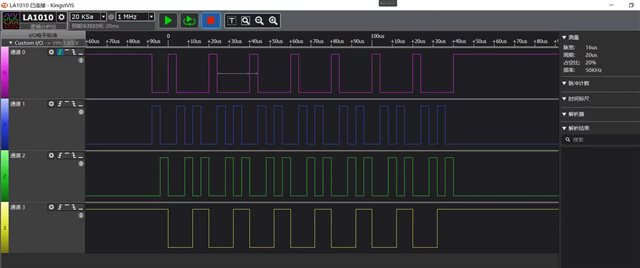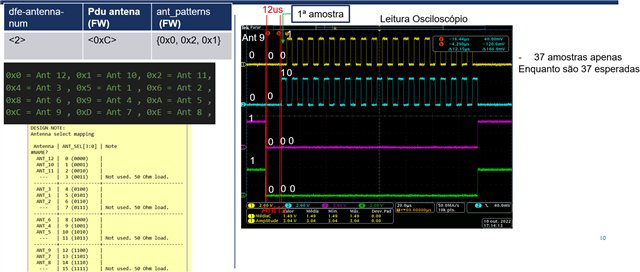Hi, I'm currently using the Direction Finding Connectionless examples to evaluate using the nRF5340 for numerous projects we have lined up, and I'm having difficulty ascertaining whether or not I'm actually collecting valuable data.
I've made minimal changes to the example, just set up the GPIO overlay to match the antenna array we are using and setting up a very basic switching sequence.
My overlay file is currently set to use 3 antenna, with 0x3 set as the reference antenna.
dfe-antenna-num = <3>; dfe-pdu-antenna = <0x3>;
My switching sequence is then set to {0x5,0x9}.
My understanding then is that of the 45 samples I receive from the CTE, the first 8 would be using ANT 0x3, allowing me to ascertain a reference phase using arctan2(Q,I), then the remaining would alternate between ANT0x5 and ANT0x9. From the switching samples I calculate a phase offset and use the basic θ = arccos((ψλ)/(2πd)) formula to calculate an angle.
My first 2 most basic questions are so:
1. Obviously, this approach is going to struggle with noise and reflections etc, but I'm unsure as to how big those effects might be - how flakey I should expect this naive appraoch to be.
2. The IQ samples themselves, I'm unsure as to what range of values I should be expecting. In most of my testing so far the majority of my samples are in the range 0±50, which from looking around on this site seems to be low.
I'm reasonably confident the data I've collected so far is garbage, and will have more equipment available soon to properly interogate my hardware setup (WFH introduces some unfortunate delays at times), but I want to check it's not my analysis of the data that's the issue.
When calculating the reference phase, I use atan(Q,I) and see that odd samples are consistently ~180° out of phase with even samples. Is this expected behaviour, and if not how am supposed to ascertain the reference phase, are there supposed to be two reference phases for odd an even sample slots? My intuition is no but as I'm sure is obvious, I'm very much learning on the job here.






